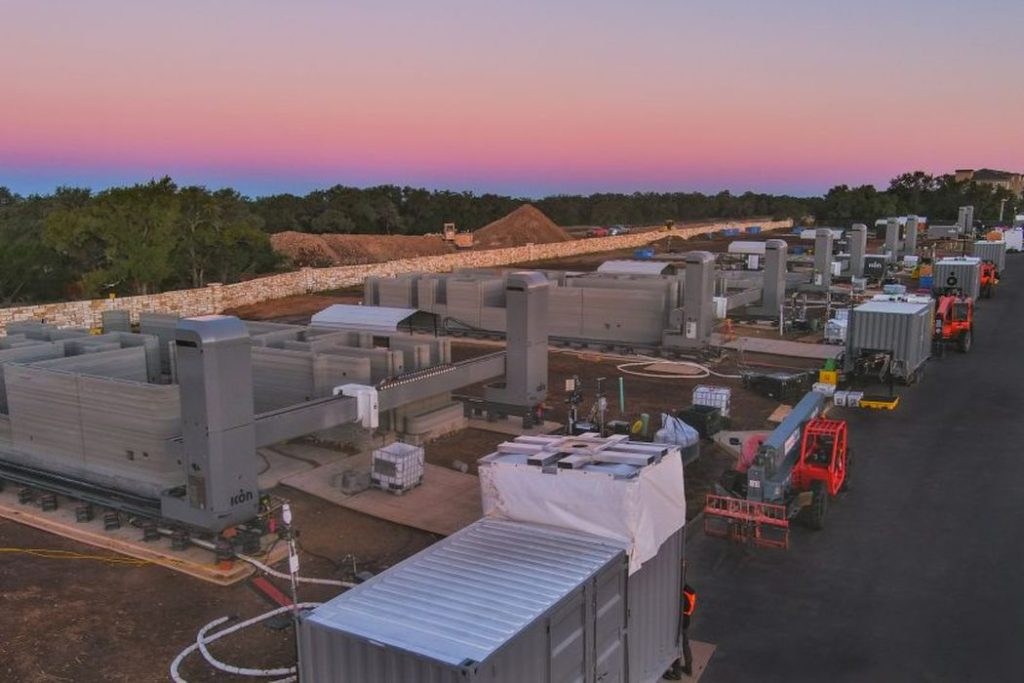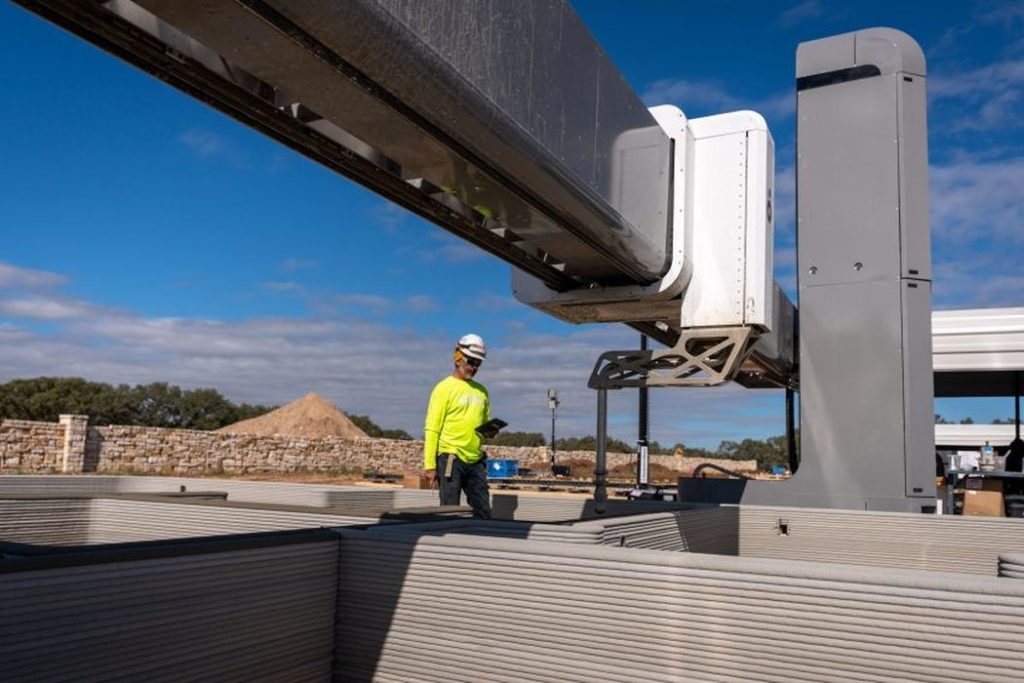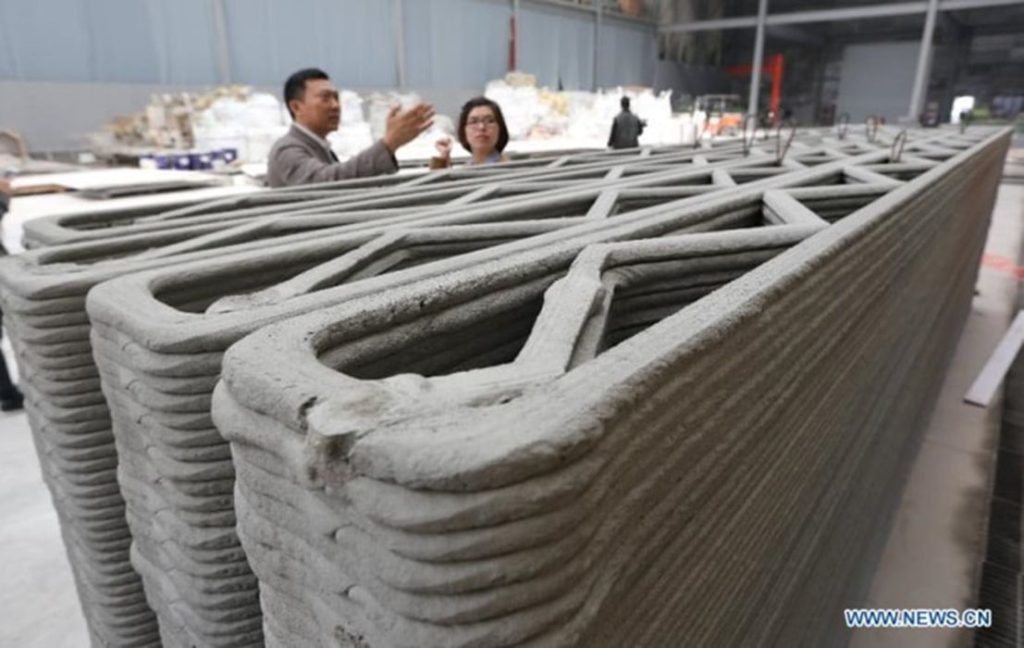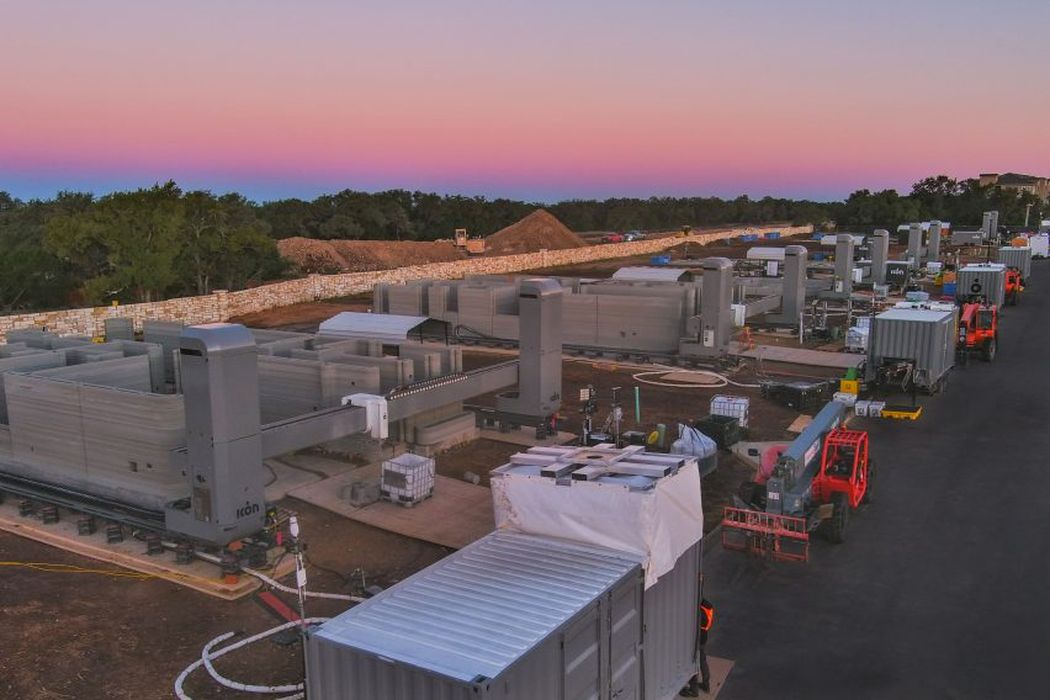
Charles R. Goulding and Preeti Sulibhavi look at an unprecedented 3D print project in Texas.
What once would have been perceived as science fiction, 3D printed homes are now a reality. In fact, 3D printed communities are being built and it is happening in Austin, Texas.
Construction is currently underway on a community of a hundred 3D printed homes, co-designed by Danish architecture studio BIG and American construction technology company ICON. The construction company selected for this project is Lennar, the nation’s second-largest home builder.
Sited in Georgetown – a municipality outside of Austin, Texas, the project could be the largest community in the world built using 3D printing technology to date.

The material used to build this housing community is called Lavacrete (a proprietary form of concrete), which, according to the company, is an “extremely durable building material” that can be printed at high speeds.
Advantages of 3D printing in this housing community, as opposed to traditional construction methods, include flexibility in design (especially for walls), as well as there being less waste produced in the process.
The layout of the neighborhood is like that of a traditional American suburban design with driveways, yards and streets connecting the homes.
The size of each home ranges from three to four bedrooms. The homes will be priced beginning in the mid US$400,000 range and be available for purchase in 2023.

But like with every great project, comes challenges. The entire homebuilding industry is facing labor constraints and shortages — particularly for materials such as engineered wood, windows, garage doors, paint and vinyl siding,” that limit Lennar’s ability to keep up with real estate demand for such homes.
Lennar is building homes slower than expected, and builders across the nation are facing disruptions that “are affecting different trades at different times and in different geographies,” according to Jon Jaffe, Lennar Co-CEO. The company delivered 15,199 homes in the third quarter, missing low-end estimates by 600. Demand for materials remains high.
A silver lining to this is that the homes are being 3D printed using robots. Automation has improved efficiency, reduced injuries, and created a higher level of quality to create homes that are “better in every way.”
3D printed homes also offer high durability, with increased architectural design opportunities due to the digital nature of the technology, all while using energy-efficient and sustainable methods.
The Research & Development Tax Credit
The now permanent Research and Development (R&D) Tax Credit is available for companies developing new or improved products, processes and/or software.
3D printing can help boost a company’s R&D Tax Credits. Wages for technical employees creating, testing and revising 3D printed prototypes can be included as a percentage of eligible time spent for the R&D Tax Credit. Similarly, when used as a method of improving a process, time spent integrating 3D printing hardware and software counts as an eligible activity. Lastly, when used for modeling and preproduction, the costs of filaments consumed during the development process may also be recovered.
Whether it is used for creating and testing prototypes or for final production, 3D printing is a great indicator that R&D Credit eligible activities are taking place. Companies implementing this technology at any point should consider taking advantage of R&D Tax Credits.
No Place Like Home
There is no shortage of reasons why 3D printing is a viable and high-quality solution to many construction demands and needs in today’s world. We hope this piece demonstrates why as well as how 3D printing is building its way into the residential construction market.

